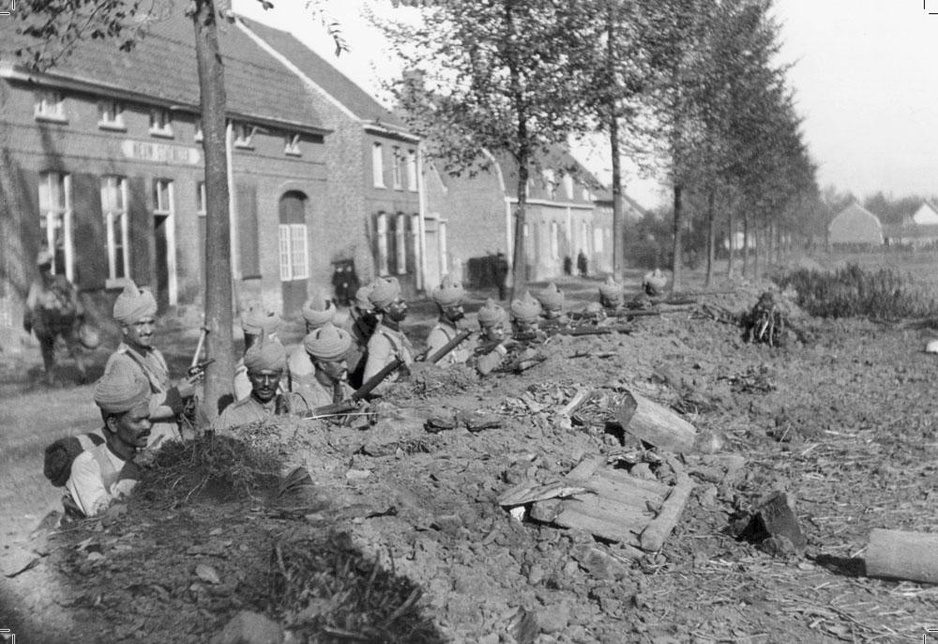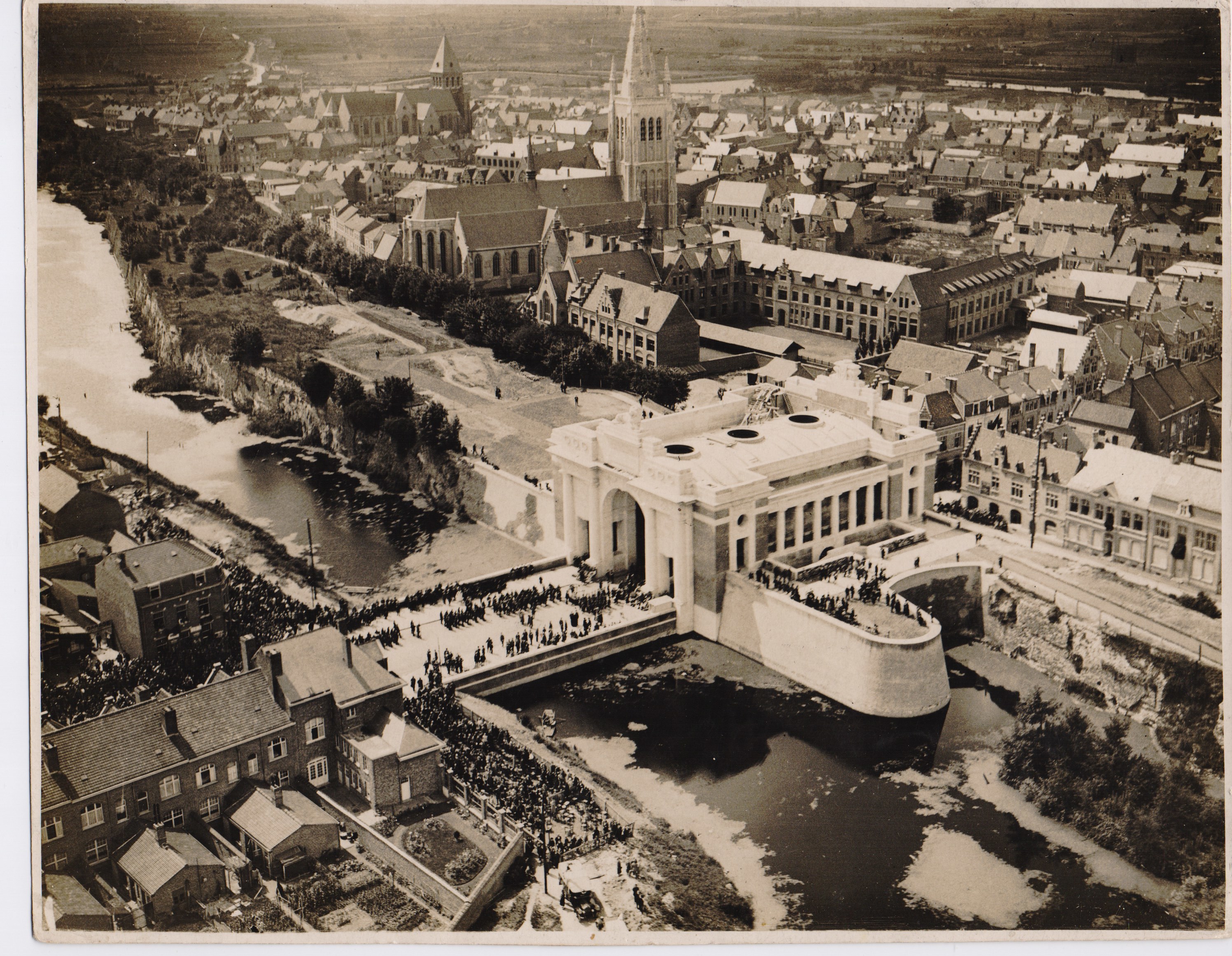history
1917, a Crucial Year in Flanders Fields
If we consider the history of the First World War from the perspective of its enduring legacy, we see that 1917 was certainly a crucial year, if not the most crucial year of all. After almost three years of heavy fighting, Europe was already significantly weakened and the new future world powers were entering the theatre of war for the first time.
In April 1917, the United States declared war on Germany. At around the same time, the young republic of China joined the ranks of the Allies and permitted around 125,000 labourers to be recruited for the logistical support of the British and French armies on the Western Front. In October 1917, tsarist Russia was defeated by the Bolshevik Revolution, which led eventually to the foundation of the Soviet Union, and almost immediately to the dissolution of the Eastern Front, in January 1918.
In May 1916, Great Britain and France shaped their colonial policy for the Middle East in the secret Sykes-Picot Agreement. This was followed at the beginning of November 1917 by the Balfour Declaration, which triggered the Palestinian issue. In short, anyone who wants to learn more about the current balance of power in the world, or about the Middle East, cannot disregard the crucial year of 1917.
That year was also of particularly great importance for the front in Flanders, or Flanders Fields, as in the poem by John McCrae. Three major events that occurred in 1917 have significant repercussions even today.

Soldiers of an Australian 4th Division field artillery brigade on a duckboard track passing through Chateau Wood, near Hooge in the Ypres salient, 29 October 1917. Photo by Frank Hurley. © Wikimedia Commons
The Third Battle of Ypres
The biggest event at the front in Flanders was the Third Battle of Ypres, known by the name of its final phase, the Battle of Passchendaele. With a death toll of at least 150,000 between 7 June and 17 November 1917 (perhaps as many as 175,000 – the counting continues), it is the largest massacre ever to have taken place on Belgian soil. This elevated Passchendaele (literally “Passion-dale”) to the ultimate symbol of WWI warfare: a ruthless and tragic conflict in which human lives counted for little or nothing.

Map of the Third Battle of Ypres, taken from 'A Short Military History of World War I - Atlas', 1950 © Wikimedia Commons
For the armies of the European nations, it was almost the last time this would happen on such a scale. Only the Battle of Stalingrad, when Russia fought against Nazi Germany, employed the same relentless strategy, which inevitably resulted in a catastrophic conclusion. It is astounding that Passchendaele could still happen in 1917, after the bloodbaths of Verdun and the Somme in the previous year. When we consider the battle in detail, it becomes only more obvious that the aim was a Pyrrhic victory pursued at the expense of unprecedented sacrifices (at least Stalingrad, in contrast, involved an actual victory). This lends the war a real sense of tragedy through human failing.
The 1917 military campaign in Flanders was sadly inspired by the French debacle of the springtime Nivelle Offensive on the Aisne. Following the failure of the attack on the Chemin des Dames and the threat of strike within the French army, it fell to the British to take up every new Allied initiative. The British commander Douglas Haig seized the opportunity to carry out an old plan: a massive assault at Ypres. This was partly out of revenge for both the First and Second Battles of Ypres, which had been particularly difficult and embarrassing for the British. The terrain, however, did not favour them. The Germans were positioned at the highest and driest parts of the front. They had also built up solid layers of defence, even more so than at the Somme, which made the chances of a breakthrough very unlikely.

Aerial view of the village of Passchendaele before and after the Third Battle of Ypres, 1917 © Imperial War Museum, London
The boggy Flemish ground was difficult terrain for an attack, and the new British offensive weapon, the tank, would bring scarcely any advantage. When the weather turned against them, too, the Flemish mud became just one more enemy. But the argument was that the battle was necessary to shut down the German submarine bases at Zeebrugge and Ostend. They had done a great deal of damage to British supplies from overseas at the end of 1916, but by the summer of 1917, that threat had lessened.
As soon as supply was organized in convoys, under the protection of Navy warships, and the bases were increasingly targeted by British air raids, the damage was significantly reduced. Haig, however, had obtained permission to attack, on the condition that he did not turn it into another Somme – and he would not be stopped. The Americans might soon be playing a significant role, and the Russians might not remain at the Allies’ side for much longer, so he was in a hurry.

Dugout headquarters near Hooge Crater during the Third Battle of Ypres, 20 October 1917 © Australian War Memorial
7 June, The Battle of Messines
The first part of the plan went rather well. Anyone who wanted to attack in a northerly direction at Ypres had to ensure that the salient in the south was at least straightened. The attack of Herbert Plumer’s Second British Army, supported by an unprecedented arsenal of artillery and initially aided by the detonation of mines tunnelled beneath the German frontline, was a great success. The southern salient around Wytschaete and Messines was straightened, with relatively few losses. A little over 6,000 deaths in return for capturing over 4 km at the centre of a front that was 12 km wide.

Smashed up German trench on Messines Ridge with dead German soldiers. © Wikimedia Commons
10 July, Operation Hush/Strandfest
Maintaining this new frontline proved more difficult than the assault itself, however, and in the north, on the Gheluvelt Plateau, the German threat had not been neutralized. On 10 July, a German attack in the dunes of Lombardsijde put an unexpected end to the planned British Operation Hush, which involved an assault along the coast towards Ostend and should have been followed by a landing with amphibious vehicles. The German Operation Strandfest scuppered this plan by driving the British Fourth Army back onto the left bank of the Yser, where it was to remain.
Colossal loss and little gain
Two days later, at Ypres, the largest British bombardment of the German frontline began. Within three weeks, the frontline had been blown to shreds. The major assault followed on 31 July, involving 13 British, 2 French, 1 Australian and New Zealand divisions across a front of 24 km. This display of power, unprecedented in Flanders, cost 7,600 lives over two days on the Allied side alone. On Pilckem Ridge, 3.5 km of ground was captured. The greatest losses occurred at the centre of the assault, towards Zonnebeke and Gheluvelt, where progress was less than a kilometre and only a small foothold could be established on the plateau. The tanks became stuck in the mud and remained so for the whole of that wet summer, in spite of a few small successes.

The Battles of Ypres. British advances during September 1917, picture taken from 'The struggle in Flanders on the western front, 1917' © Wikimedia Commons
On 3 August, the Tank Corps had already informed its commander: 'From a tank point of view, the Third Battle of Ypres may be considered dead. From an infantry point of view, the Third Battle of Ypres may be considered comatose. It can only be continued at colossal loss and little gain…' (Report from Tank Corps Headquarters, 3 August 1917).
This prediction proved accurate. In seven subsequent battles, the British army, fully supported by its Dominions, continued to attack for one hundred days. Passchendaele was eventually reached in mid-November, a target that, according to the plan, should have been achieved after the first 72 hours. With the exception of the battle of 4 October (The Battle of Broodseinde), no further significant progress was made, and the British death toll was consistently high, far higher than that of the Germans, as far as we can tell (it is hard to trace the missing German soldiers, as their names were not recorded in commemoration).

A team of stretcher bearers struggle through deep mud to carry a wounded man to safety near Boesinghe on 1 August 1917 during the Third Battle of Ypres. © Imperial War Museum, London
The British army ultimately suffered a death toll of 60,000, the Australians 10,000, Canada 4,750, New Zealand almost 2,500, and South Africa 510. The French at the north of the attack, with the Belgians joining in behind them, lost relatively fewer men, with 2,700 French and 1,250 Belgian deaths. Every British attack took place on an increasingly narrow front, and so the final point at Passchendaele was ultimately a small and indefensible salient, which was voluntarily evacuated the following year at the beginning of the German spring offensive. Never was the futility of this war demonstrated more clearly.
Tucked in where they fell
What remained were the countless bodies, buried and unburied, of tens and thousands of men. The Imperial War Graves Commission, founded in May 1917, sent a number of representatives, including the architect Edwin Lutyens, to northern France and Flanders in July to investigate how the dead might best be commemorated after the war. Lutyens wrote to his wife: ‘The graveyards, haphazard from the needs of much to do and little time for thought. And then a ribbon of isolated graves like a milky way across miles of country where men were tucked in where they fell. Ribbons of little crosses each touching each across a cemetery, set in a wilderness of annuals (…) One thinks for the moment no other monument is needed.’
Eventually, the commission had to accept that it was practically impossible to leave every grave in its original location, and Sir Edwin Lutyens succeeded in coming up with other monuments, which included recording the names of the missing, but the principle that each group of at least forty graves would become a cemetery determined the face of the Westhoek region as a landscape of memory. With more than 140 cemeteries, large and small, spread all over the countryside, on their original sites, it is not only the graves that have been preserved, but also the history of the war that caused them. Lutyens’s simple and stunning insight has, to this day, lent the battlefields of Flanders and northern France a genius loci, a sense of place, that is unparalleled elsewhere. King George V, who made a pilgrimage to the region in the spring of 1922, stated that in his view there were no 'more potent advocates of peace upon earth' than these war graves.

King George V inspects the graves at Tyne Cot Cemetery, 1922 © National Army Museum, London
The language battle
The third event of 1917 that left a legacy still felt today has never received a great deal of international attention, but then it had no direct effect on the course of the war. It did, however, make an impact on the region where this part of the war took place and where it continues to be commemorated to this day. The issue of the Flemish language (as it was then called) within the new Belgian state dated from long before the First World War. Ever since the twenty-fifth anniversary of the Belgian revolution of 1830, Flemish intellectuals had voiced their grievances about the absence of Flemish or Dutch in public life. They had to wait a further twenty-five years for the first important laws to be passed regarding the use of Dutch in legal situations and public administration in Flanders. There were still years to go before language legislation was applied within the education system. It took the general military reform of 1913 for Dutch to receive equal status in the army.
The first Belgian chief of staff was a moderate supporter of Flemish demands
The official equality of Dutch did not, however, mean that this was already a fact for the army on the Yser. The French-speaking officers had not yet adapted to the new situation, and there was little enthusiasm for this change. The first Belgian chief of staff, General Wielemans, was a moderate supporter of Flemish demands, but when he died, on 5 January 1917, there was still a long way to go. His successor, the Walloon General Ruquoy, was more suspicious about the burgeoning Flemish consciousness in the Flemish part of the army.
Shortly after that, in February 1917, when collaborationist Flemish militants in occupied Belgium decided to establish a Council of Flanders as an executive body, effectively creating Flemish self-rule under the authority of the German occupier, his suspicion gave way to the fear that any form of sympathy for the Flemish Movement in the army verged on betrayal of the Belgian struggle against Germany. All support for or dissemination of Flemish demands was forbidden in the Belgian army, and any suspicion of such dissidence was punished.

Flemish soldiers commemorate the Battle of the Golden Spurs, ca. 1917
This forced the emerging Front Movement, which propagated Flemish demands and had an increasingly political character, to go underground. In this climate of suspicion and prohibition, a series of open letters and pamphlets were circulated in the army to publicize the Flemish cause. These letters were far from perfect, but from July 1917 a growing number of Flemish soldiers in the army became aware of Flemish rights. Every frustration of this long and bloody war increasingly became part of their perception of the injustice that they were suffering as Flemish soldiers. Their leaders’ attempts to suppress these developments only encouraged their feelings.
When during – and particularly immediately after – the war, the commemoration of fallen Flemish soldiers was also opposed and, in some cases, even prohibited by the Belgian authorities, the battle for the language suddenly took on a new dimension. What the Flemish popular movement had not managed to do for seventy years now became reality. The Front Movement, which had created the open letters, became a Front Party, which, after the war, succeeded in placing Flemish grievances at the top of the political agenda. Partly because of the Belgian authorities’ reluctance to implement the promised reforms rapidly, what had been a modest political movement became a mass movement, which to this day continues to influence the political landscape of the strongly regionalized country of Belgium.

Election posters for the Front Party in 1919 © ADVN
The First World War, which had a unifying effect in Belgium in 1914, was to achieve the opposite from 1917 onwards. That tendency continues today. Neither faction, however, is capable of appropriating the entire legacy of the war. The differing interpretations in both parts of the country, particularly regarding collaboration in the First and Second World Wars, continue to determine a significant amount of the political discourse though, even if they are historically inaccurate. As a result, to this day, the significance of the First World War has a different character in the two parts of Belgium, particularly from a political point of view.
These issues have less impact in the area of the former front itself, as its wartime landscape of memory is determined first and foremost by the omnipresence of the tragedy that marked this region, particularly in that crucial year of 1917.






Post comment
Sign in